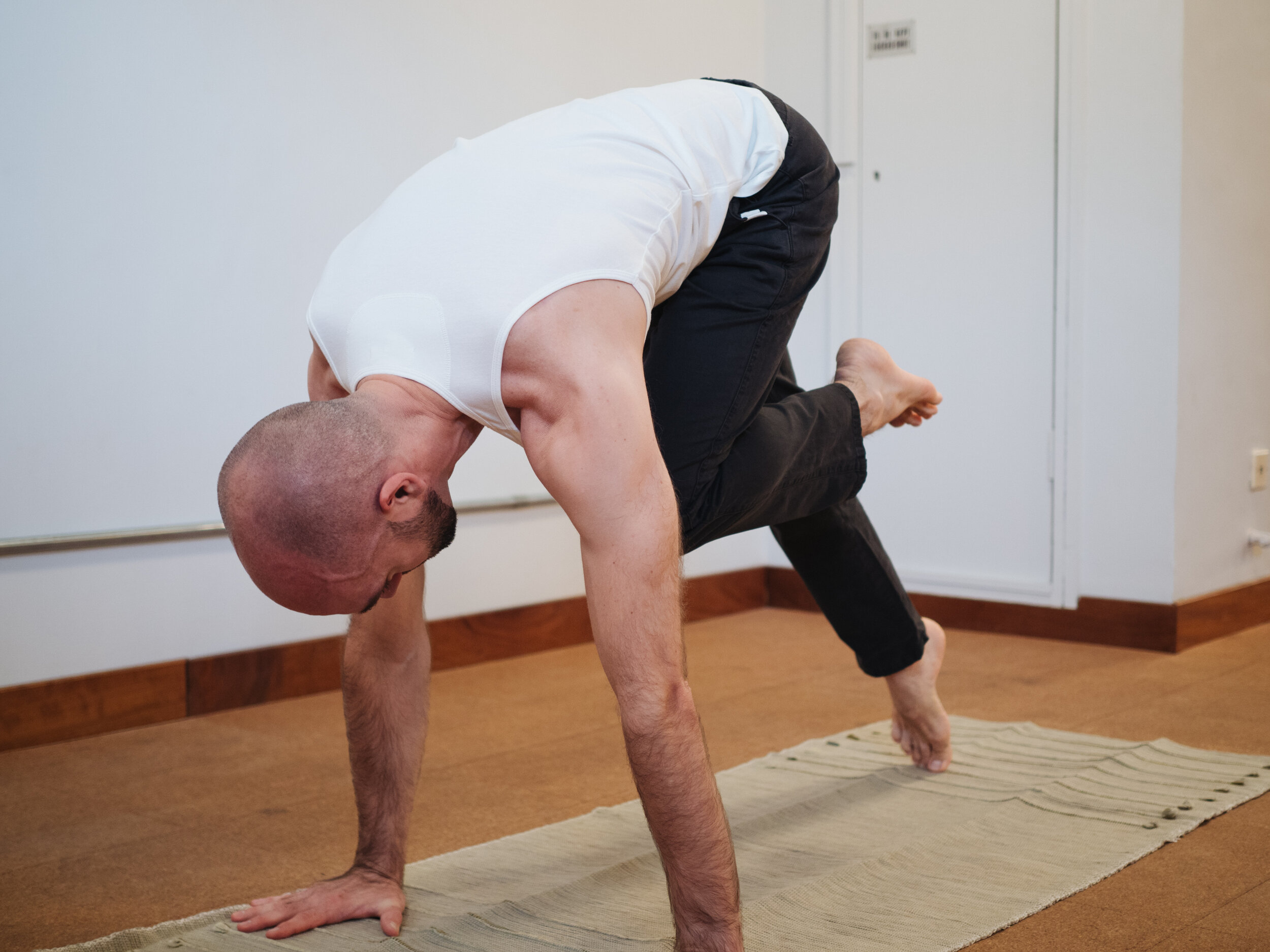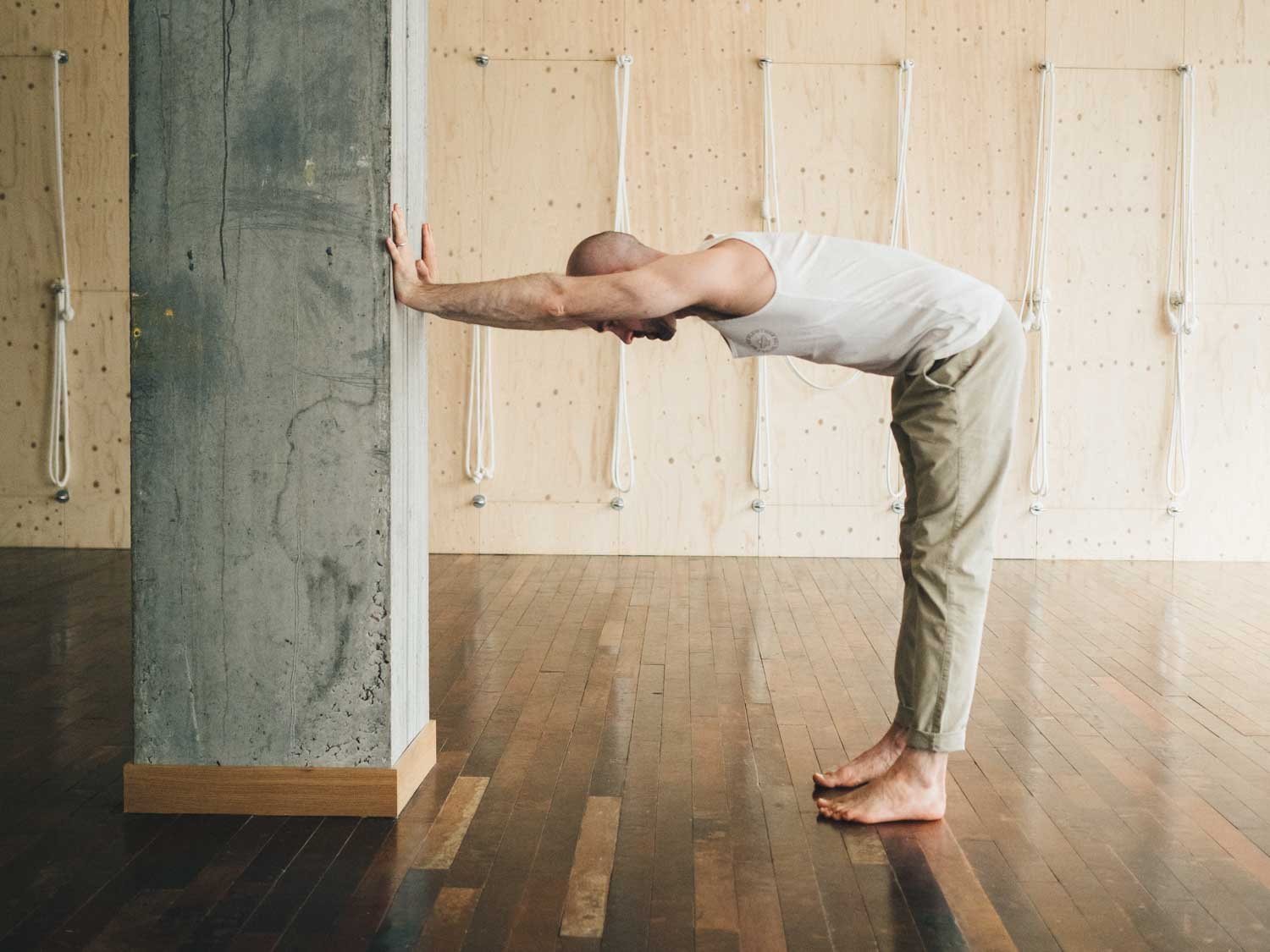Continuing on from last week's consideration of alignment in yoga - I wanted to touch upon a related topic, which is the thorny question of hands on adjustments and assists.
I don't tend to use hands on adjustments much (if at all) in public classes these days - and I sometimes feel there's the whiff of suggestion that you're not providing the 'complete experience' if you don't provide these sorts of assists.
But for me it's not a question of lack of skill or confidence (I taught in a Mysore room for a number of years and was well coached in the art of adjustments by my teacher at the time)...it's a conscious decision.
But why?
Well let's consider the most common justifications for a teacher placing their hands on a student in a yoga class...
1. To help a student get 'deeper' in a pose.
For me this is an inherently unsound justification.
Firstly it's based on the understanding that a 'deeper' pose is somehow better than the alternative which I fundamentally disagree with - as I've said many times before, what's important is our felt experience and personal exploration of the practice, not the depth to which we take each pose or what the practice looks like.
Furthermore, our bodies are pretty smart and generally know what's best for us (if we listen carefully).
Our nervous system is designed to stop us from taking a pose beyond the range of movement that it currently deems to be 'safe' - and we should listen to that feedback.
Granted, based on our history of movement and injury, the nervous system sometimes closes off that range prematurely which can cause issues or restrictions - but if we approach the practice skilfully, over time we can teach our nervous system that it's perhaps ok to move a little further.
But the key to doing this is patience, skill and time - we can't (or shouldn't) cheat that process by using an external force (i.e. the teacher) to simply 'crush' us into a pose (and I use the word crush intentionally).
Not only does this risk injury but any additional range that we create will be done so passively - i.e. we won't have the capacity to access that range by ourselves (I'll post more about this another time).
Furthermore the sensation of ‘stiffness’ that many of us associate with restricted ranges of movement will not necessarily be remedied by continuously pushing further in stretches…in fact that may be entirely counterproductive.
This sensation of stiffness or tightness can often be caused by weakness or instability - a response by the nervous system to create greater stability in areas of the body that are inherently unstable.
So rather than helping, continuing to stretch that area of the body is likely to exacerbate the issue - and we might be better served by working on strengthening those muscles instead (or as we do in the Functional Range Conditioning system, doing both things at the same time!).
2. To help a student stay safe in their practice.
This goes back to the question of alignment - i.e. the assumption that 'correct' alignment is going to keep a student safe in their practice.
As I mention above, I wrote a whole post about this last week, but to recap - 'safe' alignment is often in fact idealised alignment and there's no guarantee that it is any more or less safe than alignment patterns that deviate from these often abstract ideals.
Yes there may be some cases in which a student is doing something that's probably not a good idea - but this can be addressed verbally rather than needing to use hands on adjustments.
3. To help a student find a greater sense of ease and stability in a pose
I think there's some justification in this. When I do use hands on adjustments (mostly in private classes), it's generally to help students find a greater sense of stability in a pose that is inherently unstable (for example providing an anchor point in standing balances or spotting handstands).
However when it comes to the question of 'ease' I feel that teachers are at risk of imposing their interpretation of what easeful should look like rather than what it actually feels like for the student (again see last week's post for more on this).
Better I think to invite students to explore moving in ways that allow them to find their own sense of ease in a posture - rather than imposing that upon them externally by pulling them into a position.
4. It facilitates a 'deeper connection' between teacher and student
This may or may not be the case - but the prevalence and extent of physical and sexual abuse in almost every tradition and style of yoga is deeply troubling and surely acts as a strong counter point to this argument.
Students are often being told, quite literally, to override the feedback and sensations from their own body and submit to the will of their teacher instead…this is very very shaky ground and leads us to the issue of consent - which is a big one.
For me, the difficulty in knowing whether a student truly consents (or not) to a physical adjustment is the strongest supporting argument for their exclusion from public classes.
Yes, you can ask permission first.
But in so doing we must acknowledge that it can be difficult for students to feel empowered to convey their wish not to receive a hands on adjustment given there can be a stigma associated with this choice and also given the power dynamic (perceived or real) that exists between a teacher and student...I've been there myself.
So why risk putting your students in this position?
(This last consideration is an extremely complex and important one - it's a subject I plan to return to more extensively in another post. In the meantime I would highly recommend reading Karen Rain's article and listening to her podcast interview with J Brown).
There are probably other justifications for providing hands on adjustments that I've neglected to mention here.
But ultimately I don't feel that the essence of the practice loses anything from a lack of hands on adjustments - and given the risk of upsetting, injuring* or triggering someone, I personally can't see a justification for their continued use in public group classes (private classes are perhaps a separate debate).
It's a very tricky and nuanced subject and I accept that my views won't be shared by everyone, but hopefully the above helps to clearly outline my perspective - I'd be really interested to hear your thoughts too as either a student or teacher of yoga (or both!).
*In a recent podcast interview, Jason Crandell mentioned that on every Advanced TT he asks all students to raise a hand if they’ve ever been injured by a hands on adjustment. He claims that the % of people in the room who put their hands up is consistently at the 50% - 70% range. Food for thought indeed…





















